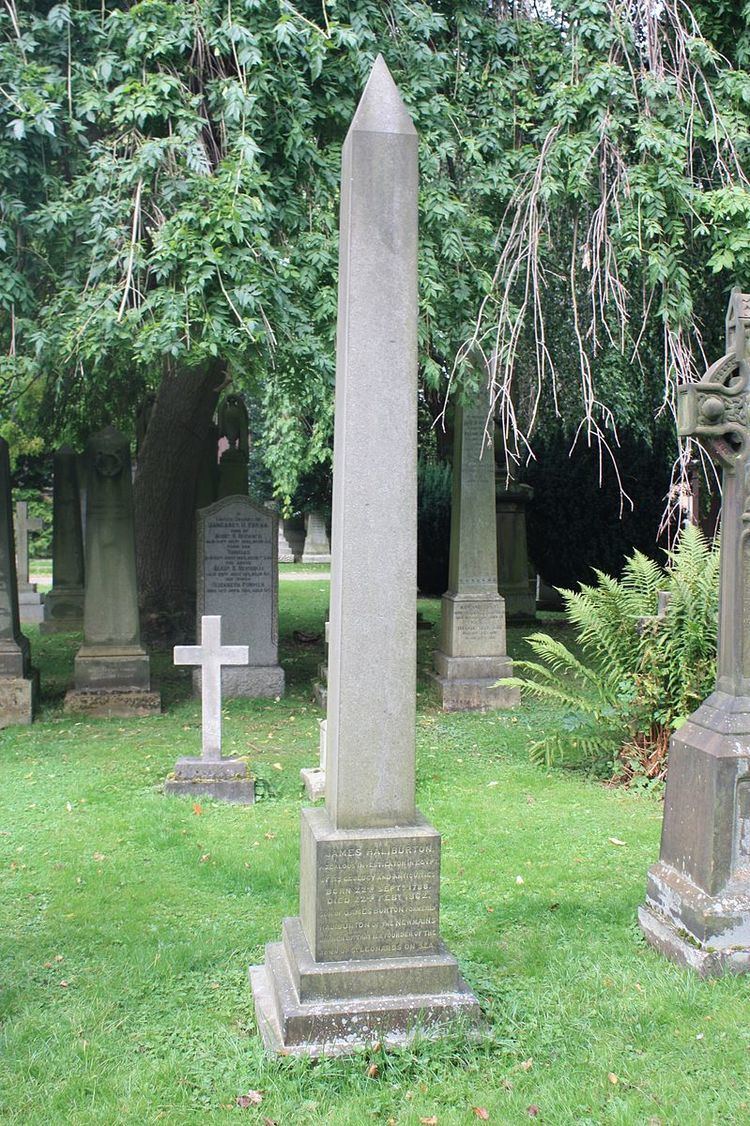Name James Burton | Role Egyptologist | |
 | ||
Died February 22, 1862, Edinburgh, United Kingdom Education | ||
James Burton (22 September 1786 – 22 February 1862) (formerly James Haliburton and latterly James Haliburton) was an early British Egyptologist, known for his pioneering exploration and mapping of the Valley of the Kings, during which he became the first individual of the modern age to enter KV5, his pioneering excavations at Karnak, during which he discovered of the Karnak king list, and his excavations at Medinet Habu, during which he was part of the team that discovered TT391.
Contents
- James burton guitar lesson lead guitar lesson in the style of james burton ep161
- Birth and Family
- Egyptology
- Disappearance and Disownment by the family
- Auctioning of property
- Death and Burial
- References
The son of James Burton (property developer), he was christened 'James Haliburton' but his father changed the family surname to Burton in 1794. The son James then changed his surname to Burton also, though he was the only member of the family to subsequently change his surname back to Haliburton (in 1838). He was the brother of the architect Decimus Burton.
James burton guitar lesson lead guitar lesson in the style of james burton ep161
Birth and Family
James was the fourth child and second son of property developer James Burton (formerly James Haliburton) and Elizabeth Westley (12 December 1761 - 14 January 1837), of Loughton, Essex, daughter of John and Mary Westley. The son was christened 'James Haliburton' but his father changed the family surname to Burton in 1794. The son James then changed his surname to Burton also, though he was the only member of the family to subsequently change his surname back to Haliburton (in 1838). He was an older brother of the architect Decimus Burton.
On his father's side, his great-great grandparents were Rev. James Haliburton (1681–1756) and Margaret Eliott, daughter of Sir William Eliott, 2nd Baronet and aunt of George Augustus Eliott, 1st Baron Heathfield. Decimus was descended from John Haliburton (1573–1627), from whom Sir Walter Scott, 1st Baronet could trace his descent on the maternal side. He was a cousin of the American judge and author Thomas Chandler Haliburton and thence of the lawyer and anthropologist Robert Grant Haliburton and Arthur Lawrence Haliburton, 1st Baron Haliburton.
James was educated at Tonbridge School, Trinity College, Cambridge and Lincoln's Inn.
Egyptology
Between 1815 and 1822 Burton worked for the architect Sir John Soane and traveled in Italy with his secretary, Charles Humphreys, where he met Egyptologists Sir John Gardner Wilkinson, Edward William Lane, and Sir William Gell. In 1820, he was part of the team that first discovered TT391. In 1822, despite having no mineralogical knowledge, he was invited by Pasha Mohammed Ali to work as a mineralogist in the Geological Survey of Egypt. He left in 1824 and started to investigate the ancient monuments of Egypt.
In 1825, he traveled south on the Nile journeying to Abu Simbel. He spent several months in Thebes, excavating at Medinet Habu, Karnak and in several of the tombs in the Valley of the Kings. In 1824, he made the first attempt to excavate KV20 and cleared the tomb's first chamber. In 1825, he mapped KV21. He explored also KV26, KV9, KV19, and KV2. In 1825, he became the first person to enter KV5, but only partially explored the first few chambers. In 1825, he discovered the Karnak king list.
Between 1825 and 1828 Burton published Excerpta Hieroglyphica, a volume of hieroglyphic inscriptions.
Disappearance and Disownment by the family
From 1825 to 1834 little is known of Burton's activities. He disappeared into the Egyptian desert for nine years until his father stopped his allowance he was forced back to England. None of his explorations from this period have been published.
James returned to England on Christmas Day 1835 with various animals, servants and slaves including Andreana, a Greek slave girl whom he had purchased in Egypt and subsequently married, as a result of which he was disowned by the Burton family.
Auctioning of property
His notebooks, containing drawings of Egyptian antiquities and plans of monuments, were presented to the British Museum after his death by his brother Decimus Burton. These are useful as they can be compared to the condition of the archaeological sites in Egypt today.
James also collected Egyptian antiquities, most of which were auctioned at Sotheby's in 1836 to repay his debts. The only item of his collection which was not auctioned was a mummy and coffin, now in the Liverpool Museum.
He was a Fellow of the Geological Society of London.
Death and Burial
He is buried near the centre of Dean Cemetery in Edinburgh. His epitaph reads "a zealous investigator in Egypt of its language and antiquities".
